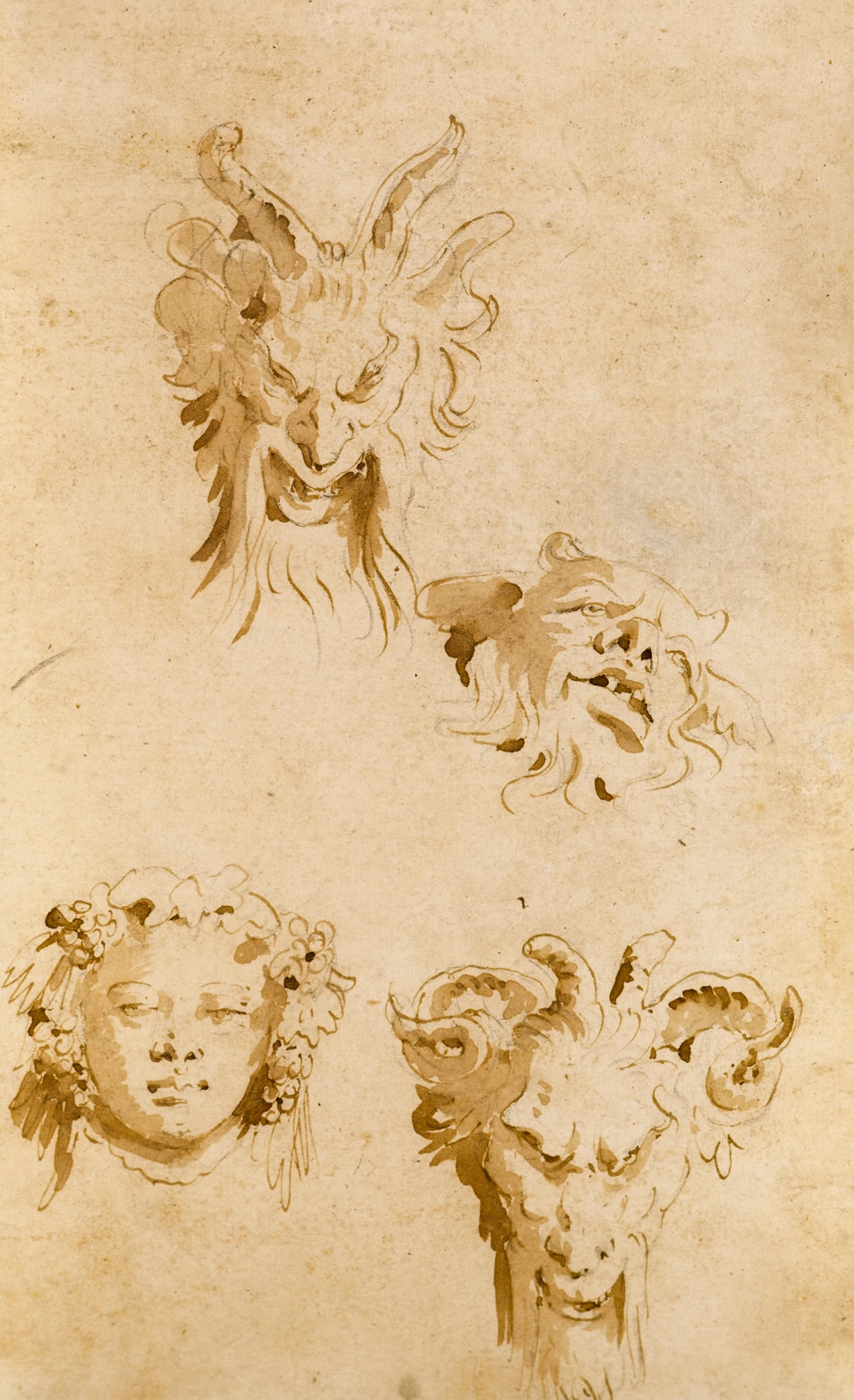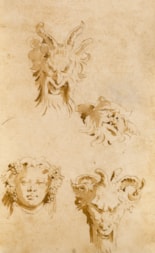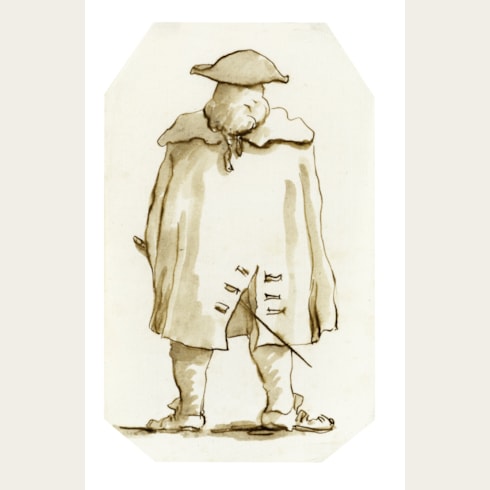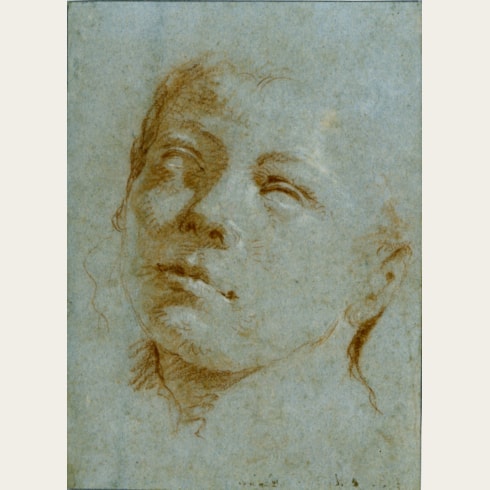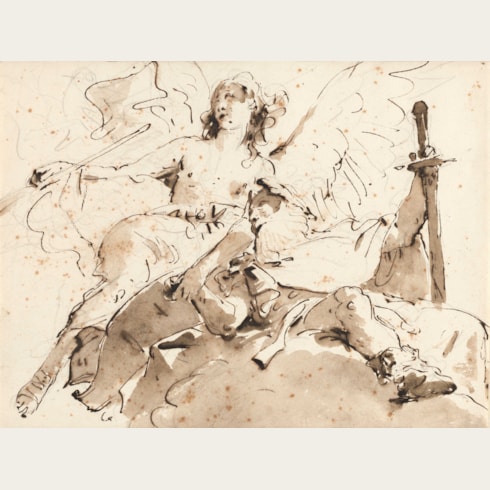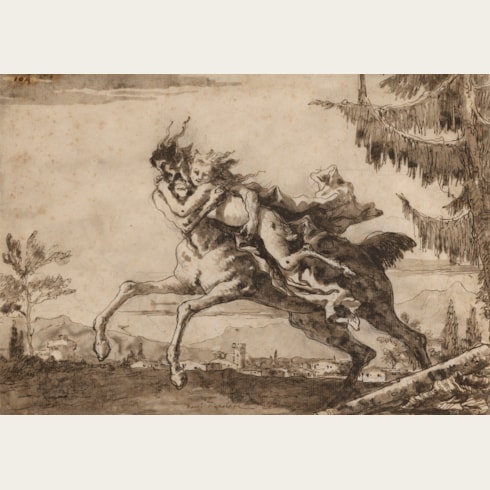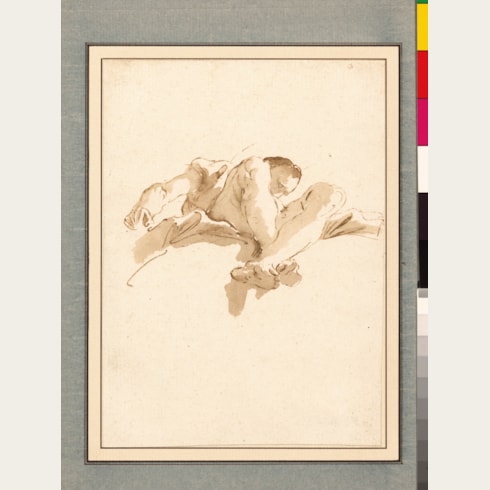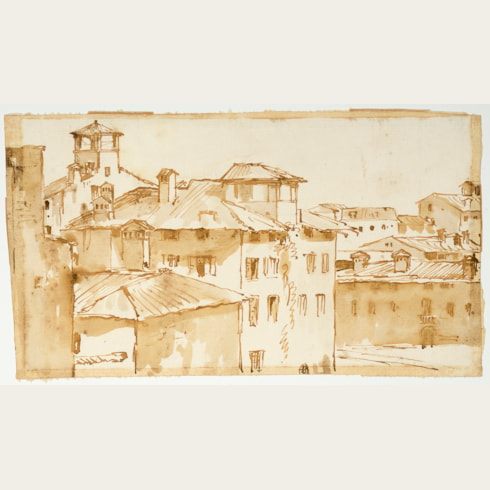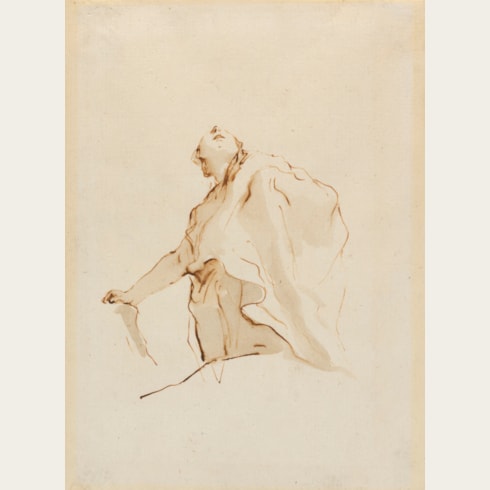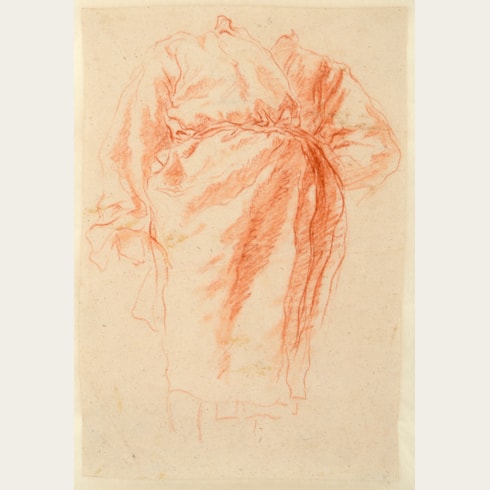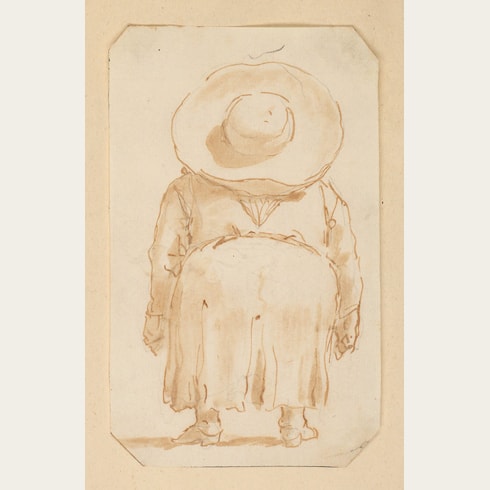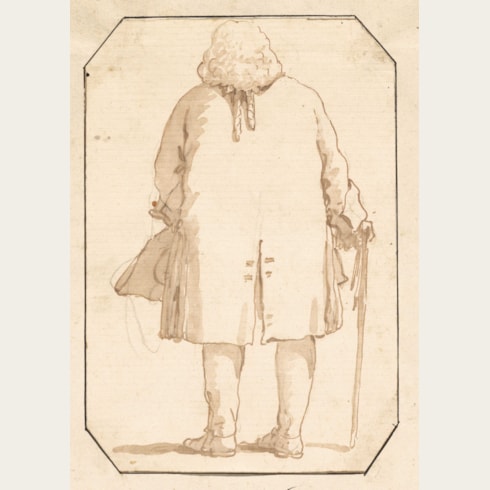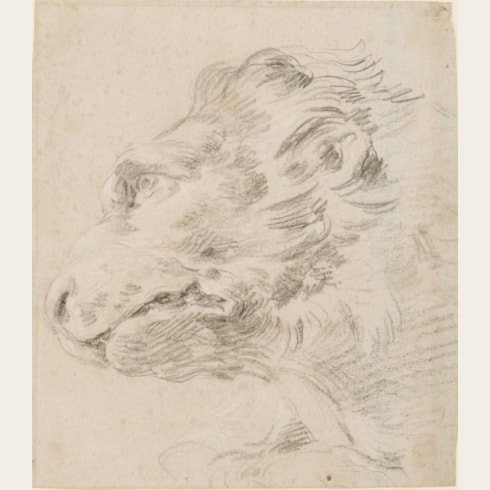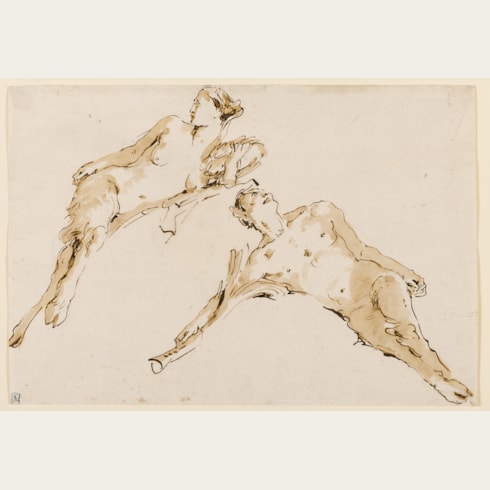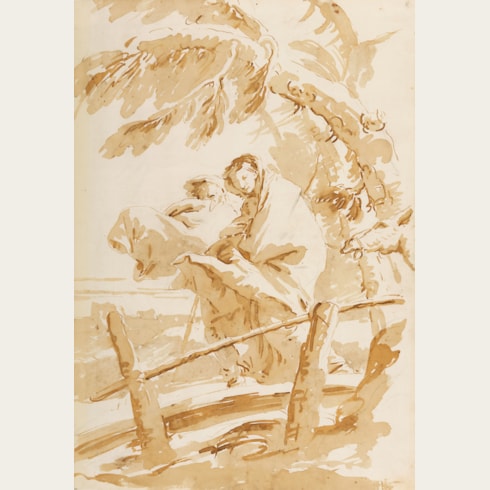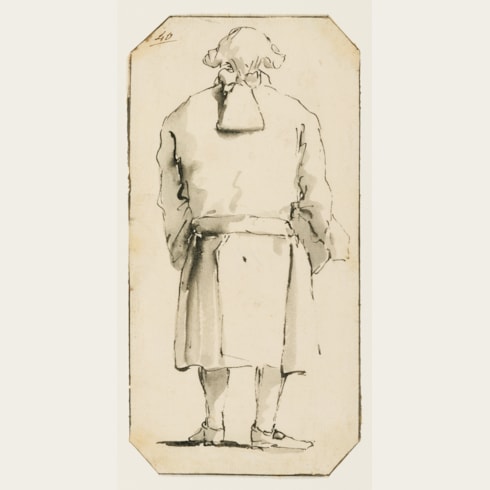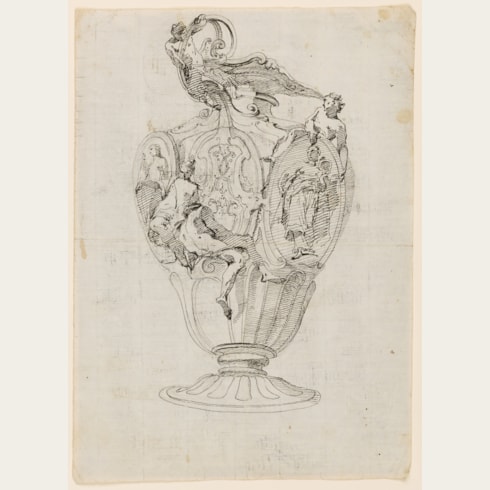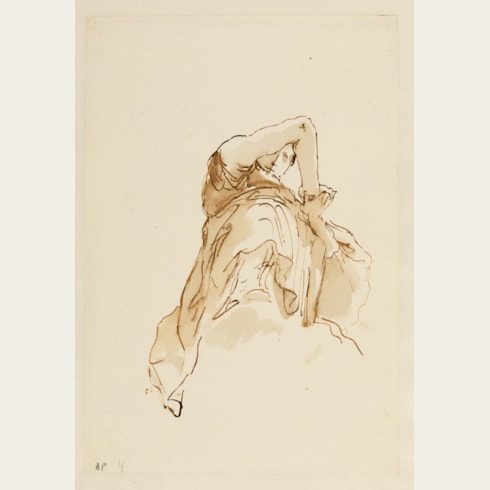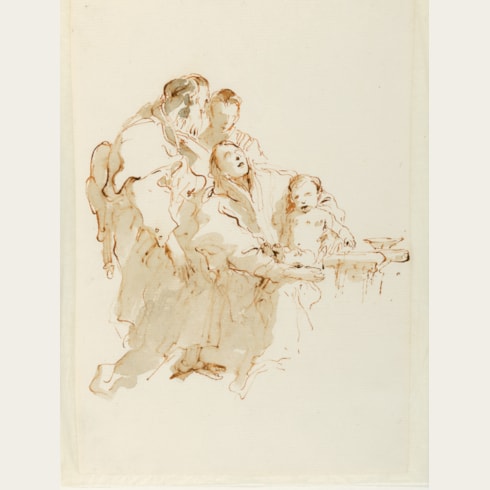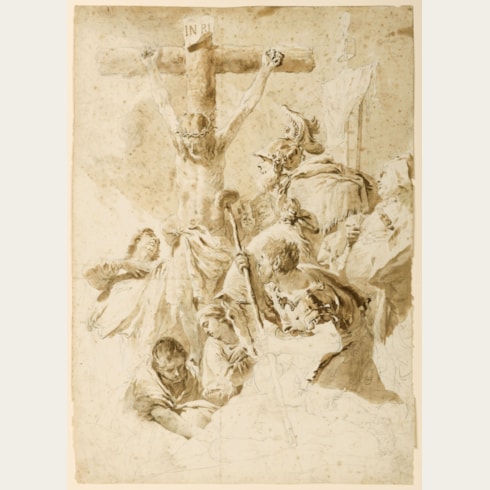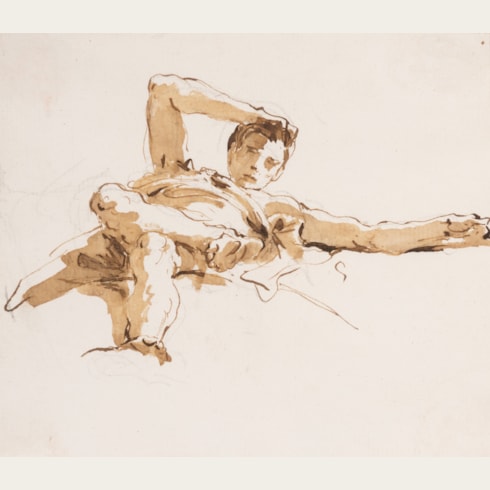Giovanni Battista TIEPOLO
(Venice 1696 - Madrid 1770)
A Sheet of Studies of Three Heads of Satyrs and the Head of Bacchus
Two small made up areas at the right centre and right centre edge.
229 x 135 mm. (9 x 5 1/4 in.)
The leading painter in Venice for much of his career, Giambattista Tiepolo was also undoubtedly one of the finest Italian draughtsmen of the 18th century. That his drawings were greatly admired in his lifetime is confirmed by contemporary accounts; indeed, as early as 1732 the writer Vincenzo da Canal remarked that ‘engravers and copyists are eager to copy his works, to glean his inventions and extraordinary ideas; his drawings are already so highly esteemed that books of them are sent to the most distant countries’. From the late 1730’s until his departure for Spain in 1762, Tiepolo enjoyed his most productive period as a draughtsman, creating a large number of vibrant pen and wash studies that are among the archetypal drawings of the Venetian Settecento. As one recent scholar has commented, ‘From the start of his career [Tiepolo] had enjoyed drawing as an additional means of expression, with equally original results. He did not draw simply to make an immediate note of his ideas, nor to make an initial sketch for a painting or to study details; he drew to give the freest, most complete expression to his genius. His drawings can be considered as an autonomous artistic genre; they constitute an enormous part of his work, giving expression to a quite extraordinary excursion of the imagination; in this respect, Tiepolo’s graphic work can be compared only with that of Rembrandt.’
Tiepolo’s drawings include compositional studies for paintings and prints, drawings of heads, figure studies for large-scale decorations, landscapes and caricatures, as well as several series of drawings on such themes as the Holy Family. Many of these drawings were bound into albums by theme or subject, and retained by the artist in his studio as a stock of motifs and ideas for use in his own work, or that of his sons and assistants.

